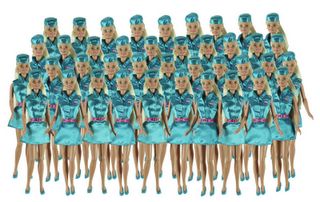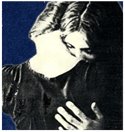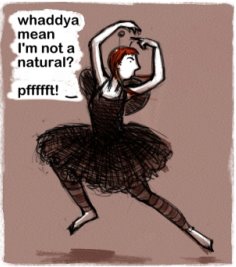The Beauty Myth

BARBIE ARMY by Magreet Bulthuis [2002].
Iris print on summerset paper, 38 x 46 inches, 95 x 115 cm.
[...]
The affluent, educated, liberated woman of the first world, who can enjoy freedoms unavailable to any woman ever before, do not feel as free as they want to. And they can no longer restrict to the subconscious their sense that this lack of freedom has something to do with apparently frivolous issues, things that really should not matter. Many are ashamed to admit such trivial concerns-to do with physical appearance, bodies, faces, hair, and clothes- matter so much. But in spite of shame, guilt, and denial, more and more women are wondering if it isn’t that they are entirely neurotic and alone but rather that something important is indeed at stake that has to do with relationship between female liberation and female beauty.
The more legal and material hindrances women have broken through, the more strictly and heavily and cruelly images of female beauty have come to weigh upon us. During the past decade, women breached the power structure; meanwhile eating disorders rose exponentially and cosmetic surgery became the fastest growing medical specialty. During the past five years, consumer spending doubled, pornography became the main media category, and thirty-three thousand American women told researchers that they would rather lose ten to fifteen pounds than achieve any other goal.
It is no accident that so many potentially powerful women feel this way. We are in the midst of a violent backlash against feminism that uses images of female beauty as a political weapon against women’s advancement: the beauty myth. It is the modern version of a social reflex that has been in force since the Industrial revolution. The contemporary backlash is so violent because the ideology of beauty is the last one remaining of the old feminine ideologies that has the power to control those women whom second-wave feminism would have otherwise made relatively uncontrollable. It has grown stronger to take over the work of social coercion that myths about motherhood, domesticity, chastity, and passivity no longer can manage. It is seeking right now to undo psychologically and covertly all the good things that feminism did for women materially and overtly.
Reproductive rights gave western women control over our own bodies; the weight of fashion models plummeted to 23% below that of ordinary women, eating disorders rose exponentially, and a mass neurosis was promoted that used food and weight to strip women of that sense of control. Women insisted on politicizing health; new technologies of invasive, potentially deadly “cosmetic” surgeries developed apace to re-exert old forms of medical control of women.
Every generation since about 1830’s has had to fight its version of the beauty myth. “It is very little to me,” says the suffragist Lucy Stone in 1855, “to have the right to vote, to own property, etc. if I may not keep my body, and its uses, in my absolute right.” Eighty years later, after women had won the vote, and the first wave of the organized women’s movement had subsided, Virginia Wolf wrote that it would still be decades before women could tell the truth about their bodies. In 1962, Betty Friedan quoted a young woman trapped in the Feminine Mystique: “Lately, I look in the mirror, and I am so afraid that I am going to look like my mother.” Eight years after that, heralding the cataclysmic second wave of feminism, Germaine Greer described the “stereotype”. “To her belongs all that is beautiful, even the very word beauty itself…. She is a doll… I am sick of the masquerade.”
In spite of the great revolution of the second wave, we are not exempt. The beauty myth is not about women at all. It is about institutions and institutional power. The qualities that a given period calls beautiful in women are merely symbols of the female behavior that that period considers desirable. The beauty myth is always actually prescribing behavior and not appearance. Competition between women has been made part of the myth so that women will be divided from one another. Youth and (until recently) virginity have been “beautiful” in women since they stand for experimental and sexual ignorance. Aging in women is “unbeautiful” since women grow more powerful with time, and since the links between generations of women must always be broken. Older women fear young ones, young ones fear old, and the beauty myth truncates for all the female lifespan. Most urgently, women’s identity must be premised upon our “beauty”, so that we will remain vulnerable to outside approval, carrying the vital sensitive organ of self esteem exposed to the air. No matter what a woman's appearance may be, it could be used to undermine what she is saying and taken to individualize - as her personal problem - observations she makes about the beauty myth in society.
The rise of the beauty myth was just one of several emerging social fictions that masqueraded as natural components of the feminine sphere, the better to enclose those women inside it. Other such fictions arose contemporaneously: a version of childhood that required continual maternal supervision; a concept of female biology that required middle-class women to act out the role of hysterics and hypochondriacs; a conviction that respectable women were sexually anesthetic, and a definition of women’s work that occupied them with repetitive, time-consuming, and painstaking tasks such as needlepoint and lace making. All such Victorian inventions as these served a double function-that is, though they were encouraged as a means to expend female energy and intelligence in harmless ways, women often used them to express genuine creativity and passion. If we are to free ourselves from the dead weight that has once again been made out of femaleness, it is not ballots or lobbyists, or placards that women will need first, it is a new way to see.
[...]
Naomi Wolf in 'The Beauty Myth' [1991]
![[quote_____:THAT]](http://static.flickr.com/139/317847903_a7670eed73_b.jpg)





















![[quote_____:THAT]](http://static.flickr.com/101/254194522_4ee4c6e656_o.jpg)
1 Comments:
Gostei de ler, realmente precisamos de ouvir estas coisas mais vezes para começarem a ser assimiladas.
Post a Comment
<< Home